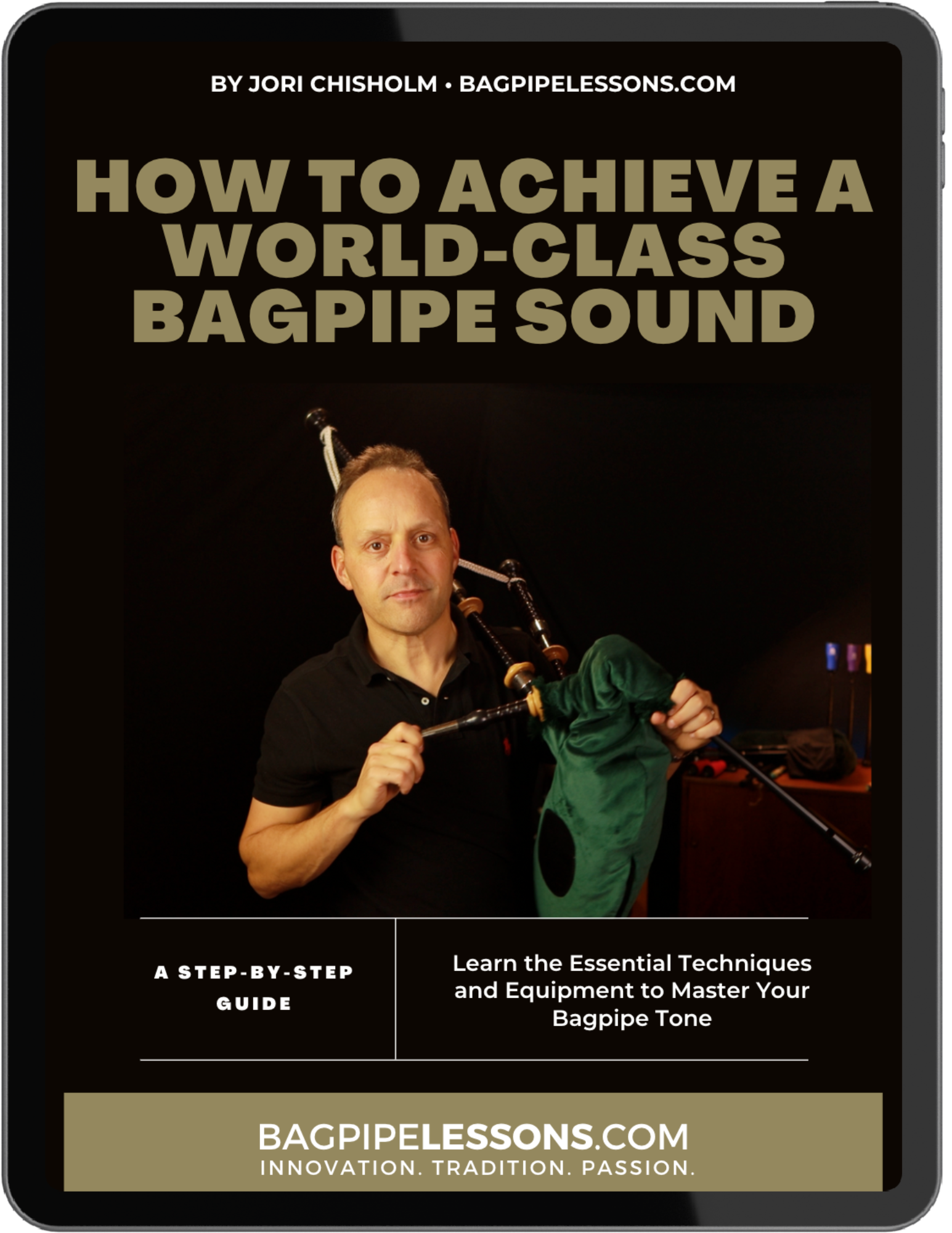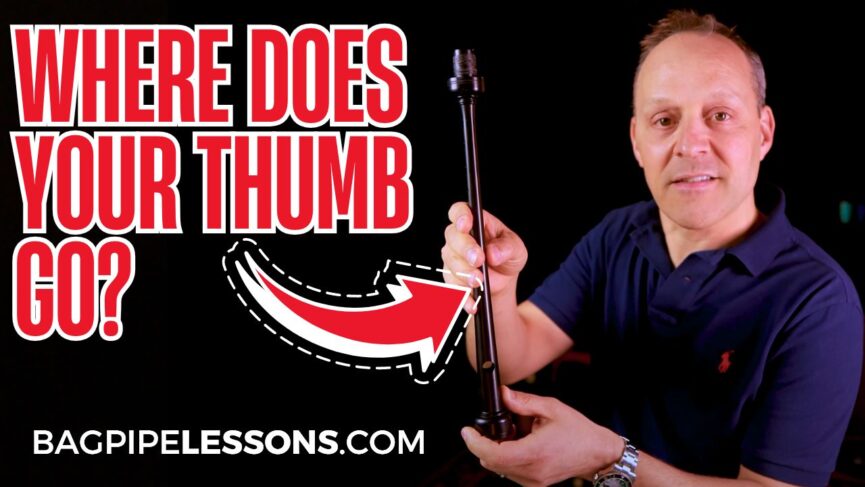
AS FEATURED IN

The Top 3 Things that Make Your Pipes Hard to Play: How to Get Pipes that Feel Great & Stay in Tune
by Jori Chisholm, Founder of BagpipeLessons.com
Last Updated: April 11, 2024
Discover the TOP THREE ways your pipes can be hard or uncomfortable to play and how overcome common challenges and transform your playing experience with expert tips on bagpipe maintenance, setup, and the right equipment.
In this video, I dive into the three main factors that can make your bagpipes hard to play and share the secrets of top pipers for achieving a great sound, comfortable play, and consistent tuning. From essential tools like the Bagpipe Gauge to innovative products such as the Tone Protector and the Foundation reed, learn how to set up your pipes for peak performance.
Watch the video and scroll down to read the full video script.
Video Transcript:
Have you ever felt like you’re fighting with your bagpipes? That they’re just too hard, not working right, uncomfortable, or even causing you pain? Ever found yourself wondering – is it me, or is it my pipes?
When you watch a top piper, they make it look so easy. Performing with grace and ease, producing brilliant, rich tone, using sparkling, clear technique and masterful masterful expression. Everything always seems to be working in their favor. How do they do it?
In today’s video, I’m going to help you master your instrument so that it’s working for you and not against you. I’m going to Help you identify the THREE main factors that can make your pipes hard to play. Secrets of top pipers to make pipes sound great, feel great, stay in tune, and easy to play. We’ll talk about some must-have piping equipment and how to set up your pipes so they are in top condition, and some simple and easy things you can do to help keep them that way.
So stick around, you won’t want to miss this video:
To excel in bagpipe performance, whether as a solo competitor, a band member, or for personal joy, it begins with setting up your instrument properly. Bagpipes, with their various components, need careful adjustment, maintenance, and fitting. This ensures they operate efficiently and feel comfortable to play.
Many instruments can still function when not in perfect condition. We’ve seen pianos with missing keys and guitars with broken strings still being played. However, bagpipes are less forgiving. A minor air leak can render them unplayable.
A common misconception among pipers is that bagpipes should be physically challenging to play. They believe a robust, steady sound requires the pipes to be hard to blow. This is a myth. Remember the initial struggle to build strength and stamina in your lips, cheeks, arm, and lungs? Once you’ve developed these, your bagpipes should be set for optimal sound and ease of play. If your pipes feel too hard or uncomfortable, the solution starts with identifying the problem’s source.
There are three primary reasons why bagpipes may feel uncomfortable or inefficient:
- Your pipes are too hard.
- Your pipes are taking too much air.
- Your pipes don’t fit you properly.
Let’s take a look at each one of these in some detail
Problem #1: Your pipes are too hard.
If your pipes feel too hard, it’s likely because the pressure needed to blow your chanter reed is too high. This isn’t just a sensation you feel while playing; you can test it by blowing directly into the chanter removed from the stock. But to understand precisely what’s happening, you need this essential tool: the Bagpipe Gauge.
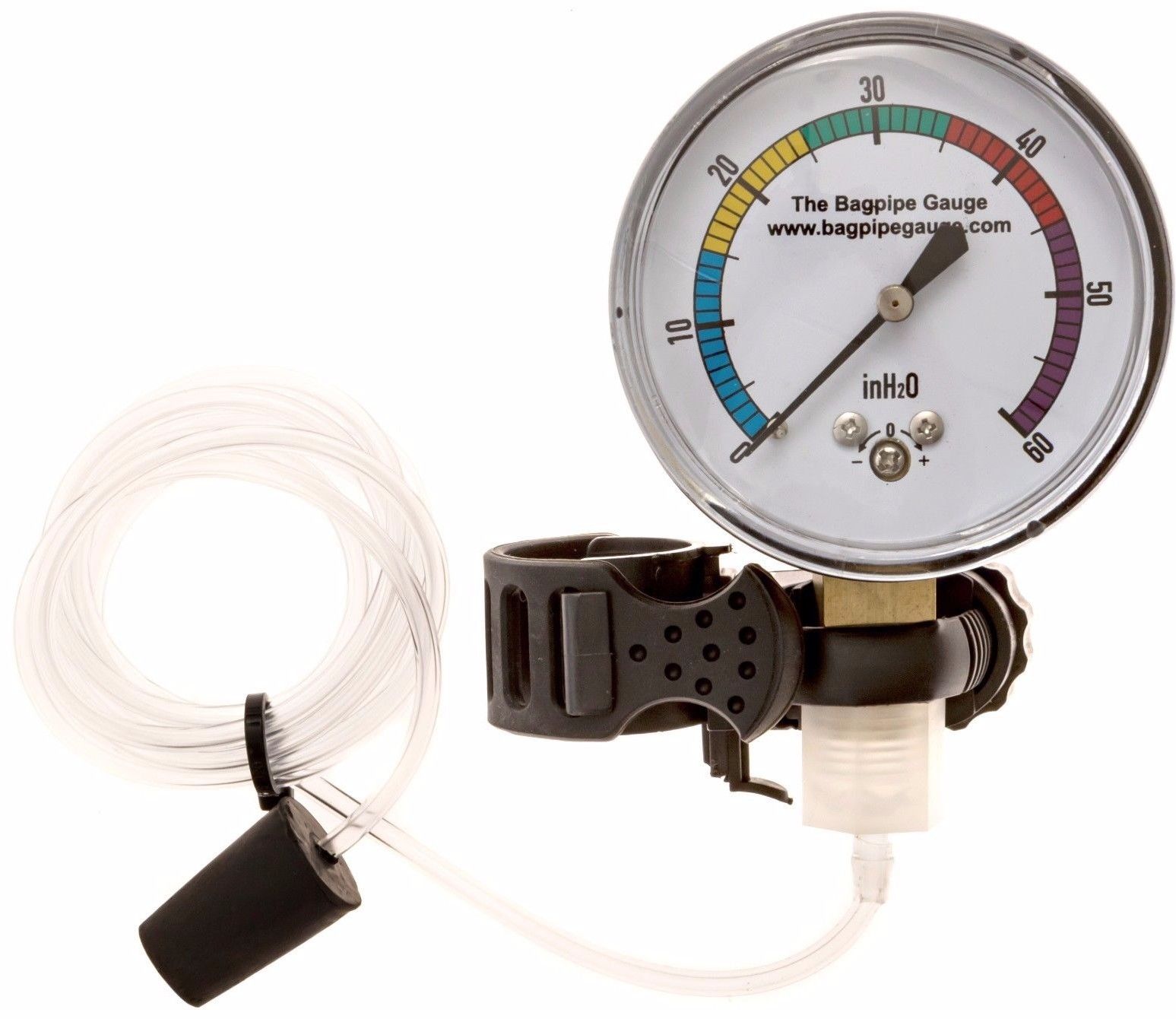 The Bagpipe Gauge isn’t just another accessory; it’s the crucial tool for diagnosing your pipes and mastering steady blowing. The gauge measures the air pressure in your bag, which mainly depends on your pipe chanter reed’s strength. Most pipers fall around the 30 mark, give or take. You’ll know you’re in the right zone when the gauge’s needle is vertical, positioned at the top of the green section. If it’s hitting 35 or higher, that’s a clear sign: your pipes are too hard.
The Bagpipe Gauge isn’t just another accessory; it’s the crucial tool for diagnosing your pipes and mastering steady blowing. The gauge measures the air pressure in your bag, which mainly depends on your pipe chanter reed’s strength. Most pipers fall around the 30 mark, give or take. You’ll know you’re in the right zone when the gauge’s needle is vertical, positioned at the top of the green section. If it’s hitting 35 or higher, that’s a clear sign: your pipes are too hard.
Learn more about how the Bagpipe Gauge can transform your playing and get yours today at BagpipeLessons.com/bagpipegauge.
So, what should you do if your reed is too hard? First, ensure that your reed isn’t overly dry or overly wet. Remember, cane bagpipe chanter reeds are highly sensitive to moisture. I’ve covered this topic extensively in another video – it’s worth a watch to understand the dynamics of reed moisture.
A reed’s best performance – where it vibrates most efficiently and is easiest to play – is achieved at its optimal moisture level. To maintain this, the key is proper storage. Enter the Tone Protector Digital Chanter Cap with Two-Way Humidity Control and the Tone Protector Reed Case. These products use advanced two-way humidity control technology, adding or removing moisture as necessary to maintain a constant, ideal humidity level. This precision control doesn’t just improve tone and ease of play; it significantly extends your reeds’ life. No more suffering with a reed that’s dried out, hard, and unresponsive.
These innovations have gained global recognition, bagging awards like Pipes|Drums Product of the Year, and are trusted by pipers of all levels, from beginners to world champions.
Why struggle with a reed that’s dried out and hard to play? Discover how the Tone Protector products can revolutionize your piping experience at ToneProtector.com. Don’t let a suboptimal reed hinder your performance.
If your reed, despite being stabilized in the Tone Protector, still feels too hard, consider using an elastic bridle – a simple rubber band strategically placed at the reed’s base. This tiny adjustment can significantly ease playability by subtly closing the reed. To learn more about this and other reed adjustments, don’t miss my instructional video on setting up and adjusting chanter reeds
However, it’s important to recognize when a reed has reached the end of its lifespan. Reeds, no matter how well-made, don’t last forever. Sometimes, it’s not about adjustment but replacement. And when it comes to replacements, I can’t recommend the Foundation reed highly enough. This isn’t just any reed; it’s the culmination of years of experimentation and collaboration with one of the world’s top reed makers. Custom-made to my precise specifications, the Foundation reed stands out in terms of sound quality, stability, and efficiency.
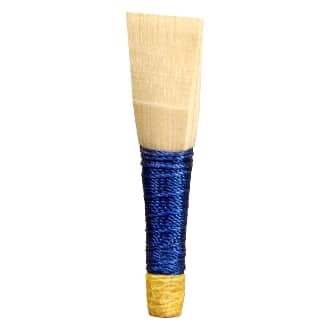 Available exclusively at BagpipeLessons.com, each Foundation reed is handpicked to match your specified strength, ensuring that every reed you receive is not just good but exceptional. The days of ordering a dozen reeds and hoping for one decent one are over. With Foundation reeds, you order what you need, knowing each one will meet your standards. Plus, every reed is meticulously stored in a controlled humidity environment within the Tone Protector at every stage – from manufacturing to shipping to storage. Delivered in a sealed container, these reeds arrive ready to play, right out of the package.
Available exclusively at BagpipeLessons.com, each Foundation reed is handpicked to match your specified strength, ensuring that every reed you receive is not just good but exceptional. The days of ordering a dozen reeds and hoping for one decent one are over. With Foundation reeds, you order what you need, knowing each one will meet your standards. Plus, every reed is meticulously stored in a controlled humidity environment within the Tone Protector at every stage – from manufacturing to shipping to storage. Delivered in a sealed container, these reeds arrive ready to play, right out of the package.
Should you wish to maintain this level of care and precision, the Tone Protector reed case is also available for purchase. When you order a Foundation reed, it can be shipped right inside a Tone Protector case, ensuring optimal condition upon arrival.
Discover the unparalleled quality of Foundation reeds and ensure the longevity and performance of your purchase. Available only at the BagpipeLessons.com Shop: BagpipeLessons.com/foundation.
In addition to finding and maintaining the perfect reed, having a chanter that is designed for optimal sound with minimal effort is crucial. Not all pipe chanters are created equal. My favorite is the Infinity Chanter from R.G. Hardie & Co. The standout feature of this chanter isn’t just its smaller holes or world-class sound, but its fantastic efficiency and sound projection. It’s about getting the most sound with the least amount of effort.
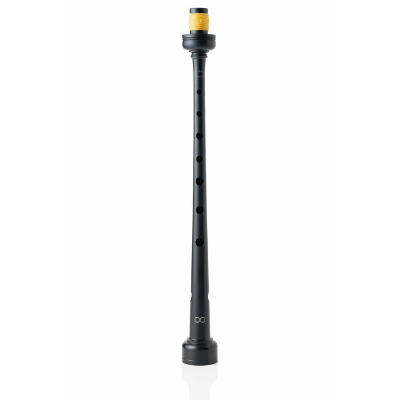
The Infinity Chanter is expertly crafted to enhance your playing experience. The reduced hole size significantly eases finger movement, leading to cleaner, more precise note execution. This is especially beneficial for pipers who might struggle with larger chanters, but it’s a feature that all players can appreciate for its comfort and ease of use.
Moreover, the efficiency of this chanter is remarkable. You don’t need to exert as much pressure, yet the sound projection is powerful and clear. It means you can focus more on the music and less on the physical strain, making your playing sessions more enjoyable and productive.
For those looking to step up their piping game with a chanter that combines ease of play with superior sound quality, the Infinity Chanter is an excellent choice. Discover more about this exceptional chanter and see it in action in my detailed YouTube video. Visit BagpipeLessons.com/infinity for more information.
Problem #2: Your pipes are taking too much air.
The next thing we are going to talk about is when your pipes are taking too much air. This is different than when your pipes are too hard. When your pipes are too hard, it means the pressure you have to maintain is too high, and this is caused by the pipe chanter reed being too hard and/or a pipe chanter that isn’t projecting your sound efficiently. When your pipes are taking too much air, the feeling you have is that you have a hard time keeping the bag full because there’s too much air escaping from your pipes. You have a sensation that you can’t keep the pressure up and you’re just huffing and puffing. It’s not that the pressure is too hard, it’s just that you can’t keep up with the air that is going out of your pipes. This can be solved by looking at all of the places that air is escaping from your pipes.
First, Check that your pipe bag is airtight. Start by removing your chanter and drones, then cork up the stocks. Inflate the bag until you can’t add any more air. Give it a good, hard squeeze for about 15 seconds. After that, check the bag. Does it still feel completely full? If you find you can blow more air in, there’s a leak somewhere. Even a small leak can make your pipes less steady and harder to play. To locate the leak, you can look for bubbles, listen for any hissing sound, or feel around with your fingers. Common leak sources include the blowpipe valve, the junction where the bag meets the stocks, or the bag material itself. For synthetic or hybrid bags, sealing the grommets with electrical tape or tightening the metal clamps might be the solution. For leather bags, you might need to season them or re-tie a stock. And if it’s a leaky valve, replacing it could be necessary.
Just like reeds, pipe bags don’t last forever. High-quality modern hybrid bags, however, offer both comfort and durability with very little maintenance, lasting for years. While traditional hide bags needing seasoning are an option, they often fall short in terms of air tightness, are more expensive, and don’t last as long.
Traditional leather bags (usually sheepskin or cowhide) have served pipers well for generations, but can be troublesome if the leather gets too dry or too wet. Hide bags need to be played regularly and require intermittent seasoning to stay airtight. If you are a casual piper or if your career, family or other commitments keep you from playing your pipes regularly, or if you live in a dry climate, consider a synthetic pipe bag that will stay airtight even when completely dry. There are many types of pipe bags on the market today, including bags with zippers that allow access to the inside of the bag, bags with rubber grommets that allow fast and easy installation, and hybrid bags that have a synthetic material on the inside and leather on the outside for a traditional feel.
There’s a debate in the piping world about natural bags like sheepskin producing better sound. But let’s be clear – many of the best-sounding bagpipes in history are being played by top players today, and they’re using hybrid pipe bags, not natural skin ones.
My personal choice? The Bannatyne hybrid pipe bag. It features a leather exterior for that traditional, solid, and firm feel, combined with a synthetic inner layer that’s breathable and super airtight. This means no maintenance, no seasoning, and it completely dries out between practice sessions, making it an ideal choice for today’s piper. And it has a super high quality airtight zipper that allows you to access the inside of the bag which is required when you want to use a desiccant based moisture control system. And you DO want one of those. My favorite is the Dri Flo also from Bannatyne. It’s lightweight, easy to use, and ensures that my drones and drone reeds are warm and dry when I play so they sound great and stay in tune.
Check that all of your joints are tight and your tuning slides are snug.
When you reinsert your chanter and drones into their stocks, the fit should be snug. These are the tightest joints on your pipes and should require some effort to adjust. If you find any of these joints are loose, it’s time to add some hemp. Preferences vary among pipers; some opt for black or yellow waxed hemp, others for waxed dental floss. My advice is to use what works best for you but aim for snug joints. I generally recommend avoiding unwaxed hemp, as it tends to tighten and loosen with moisture changes, which can affect the stability of your pipes. Regularly checking these joints before playing and adding a few wraps of hemp when necessary will maintain the right tension.
Next, check your tuning slides. Your pipes have four tuning slides, but three of them are primarily for tuning. The top slide on the bass drone can be a bit tighter since it’s not adjusted as often. The lower bass and the tenor tuning slides need to be just right—not too loose that they move on their own, yet not too tight that you can’t adjust them with one hand. Some pipers prefer Teflon plumber’s tape for a smooth seal on these slides. I’ve heard of a top piper who uses a bit of Vaseline for lubrication, but personally, I stay away from anything greasy on my pipes.
Next, let’s look at your drone reeds.
Check that the reeds are very firmly in the reed seats.
Press them firmly into the reed seats, and if your pipe maker uses threaded reed seats, twist the drone reed in securely. Be careful not to bump the reed during installation to avoid dislodging it or damaging its tongue.
Efficiency tuning is next. Take each drone reed out and blow through it individually. The goal is for the tenor drones to require equal amounts of air, with the bass drone needing a similar, if slightly greater, amount. If a drone is too airy, adjust the bridle towards the reed tip to decrease air intake. Be mindful of your reed maker’s guidance and remember small adjustments can have a large impact. The aim is to close down the reeds to the point where they are efficient but won’t shut off while playing. This fine-tuning depends on your chanter reed’s strength and your personal playing style.
There’s no amount of adjustment that is going to save a drone reed that is old, worn out, or damaged. If you pipes are taking too much air, consider getting a new set of drone reeds so your pipes will take less air AND stay in tune and sound better, too. Your goal is a full, rich drone sound that is easy to get in tune, stays in tune, and operates efficiently with minimal effort.
I have another video on the channel that has a ton of details all about drone reeds, and how to test them, adjust them, and recommendations for my favorite sets when you are ready to upgrade to a new set.
Finally, let’s talk about the third main issue of pipes that are not comfortable to play.
Problem #3: Your pipes don’t fit you properly.
There are two parts of your instrument that need to be sized for you. Pipers come in all shapes and sizes so you’ll want to make sure your pipes fit you properly so you can enjoy playing with the least amount of physical strain and you can enjoy playing with greater comfort and stamina. And when your pipes sound great and feel great to play, you’ll be able to focus on your playing instead of fighting with your pipes.
Make sure your pipe bag is the right size.
Many pipers struggle unnecessarily simply because their pipe bag is too large. Many years ago, I attended a ceilidh where one of the world’s top pipers played a few tunes and then passed around his pipes. When the pipes were passed to me, I took my turn to play a few tunes. At first, I was surprised at the small size of the pipe bag, but after a few moments it felt incredibly comfortable and easy to keep a steady pressure. Soon after, I switched to a small bag and never looked back. In my experience, many pipers who have switched to a smaller size pipe bag find it quicker to fill the bag and easier to keep it under their arm while playing. If you are playing a Medium or Large bag, I would seriously consider a smaller bag. You want a bag this comfortable to play. There are no advantages to a larger bag. You want the smallest one that is comfortable for you to play.
Make sure your pipe bag cover is the right size.
A loose, baggy bag cover can make it harder to keep your pipes under your arm. Many pipe bag covers are one-size-fits-all, which means the covers are too large for medium or small pipe bags. Get a smaller cover, or grab a needle and thread and alter your cover to get a snug fit. Consider some patches of non-slip material to help achieve that feeling of the bag locked under your arm.
Make sure your blowpipe is the right length.
A blowpipe of proper length should allow you to play your pipes with proper ergonomics, keeping your body in a normal, comfortable position. How many times have you seen a piper who has to twist their neck or turn their head away from their pipes just to reach the blowpipe? Or perhaps you’ve seen the piper who has to stretch their hands down to try and reach the chanter? Many sets of pipes come from the maker with blowpipes that are too long, but this can easily be solved with a shorter blowpipe. Many pipe makers manufacture adjustable blowpipes which are perfect for finding the exact length for your needs. The right length of blowpipe will allow you to keep your body in a neutral position, with your head, shoulders, and arms as if you were just standing naturally. Watch yourself playing in the mirror or on video, and consider whether adjusting your blowpipe length might make your pipes more comfortable to play. Borrow a shorter blowpipe from a friend to see if it feels better.
Check your blowpipe for restrictions.
Some blowpipes, especially older ones, have a very narrow inside bore. Try blowing through the blowpipe on its own. Is it free-flowing or is there a significant restriction? A narrow bore makes it harder to blow air into your pipes and makes your pipes harder to play. Consider a new blowpipe or take yours to a pipe maker who can drill it out to a wider bore.
The Adjustistick from R.G. Hardie & Co. is an adjustable length blowpipe that allows you fine tune the length of your blowpipe and adjust it to the exact length you need. It also has a really nice wide bore that is very free flowing AND it has a really nice built in valve that is super air tight.
Consider using a mouthpiece protector and a blowpipe positioner.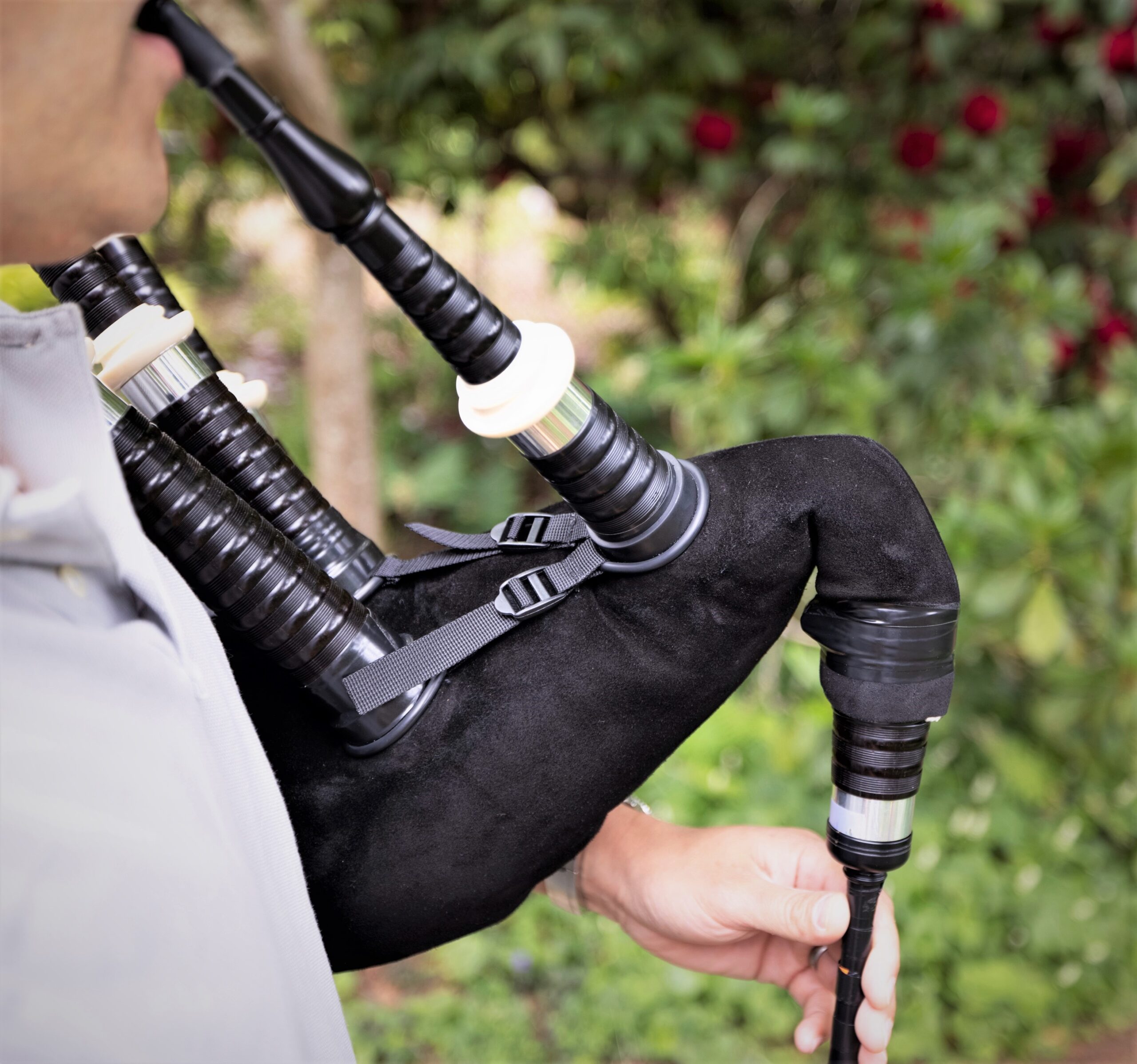
The pipes are one of the few instruments where you actually use your teeth to maintain position. You’ve likely felt tightness in your jaw or soreness in your teeth after playing — I strongly recommend upgrading your ergonomics and comfort with a Perfect Angle™ Blowpipe Positioner, an innovative but straightforward device that allows for blowpipe stability and ideal posture. It keeps your jaw and teeth healthy and happy while maintaining the perfect angle for your pipes. Plus, the Perfect Angle™ comes with a high quality mouthpiece protector for additional comfort — a piece of rubber tubing that fits over the mouthpiece and softens the bite.
I hope this guide has been useful in helping you navigate the complexities of bagpipe performance. Properly setting up your instrument is crucial for excelling, whether you’re a soloist, a band member, or playing for personal fulfillment. Bagpipes are unique in their need for careful adjustment, maintenance, and fitting to ensure efficient operation and comfortable play.
Remember, unlike other instruments, bagpipes are less forgiving. A minor air leak, for instance, can make them nearly impossible to play, highlighting the importance of meticulous care and attention to your instrument.
It’s a common myth that bagpipes should be physically challenging to play. In reality, once you have built up the necessary strength and stamina, your bagpipes should be set to deliver optimal sound with ease. If you find your pipes too hard or uncomfortable, it’s essential to pinpoint the cause.
The three primary reasons your bagpipes may feel inefficient or uncomfortable include: the pipes being too hard, taking too much air, or not fitting you properly. Understanding and addressing each of these issues is key to enhancing your playing experience.
Good luck on your journey to mastering the bagpipes. Remember, the right setup can transform your playing experience, letting you focus more on the joy of music and less on the struggle of playing. Keep practicing. You can do it!
I would love to hear your feedback and questions, so please leave them in the comments below. If you liked this video, I invite you to my BagpipeLessons.com Inner Circle. As a member, you unlock access to an extensive range of content, including weekly live online classes for all levels , conducted by myself and guest instructors who are World Champions. And you’ll get access to an exclusive lesson library packed with countless videos, lessons, tunes, exercises, and in-depth demonstrations covering every aspect of piping, from the fundamentals of music theory to advanced techniques, tuning, maintenance, setup, and beyond. You’ll also receive my direct support to help you achieve your piping aspirations. Learn more about my Inner Circle at https://bagpipelessons.com/membership/.
And please visit BagpipeLessons.com/learn for more free resources, lessons, and informative guides. While there, make sure to download my free pdf guide titled How to Achieve a World-Class Sound — you’ll find the link in the video description below. And finally, subscribe and hit the notification bell to get updates on new videos from the BagpipeLessons.com YouTube Channel.
Thanks and happy piping!

